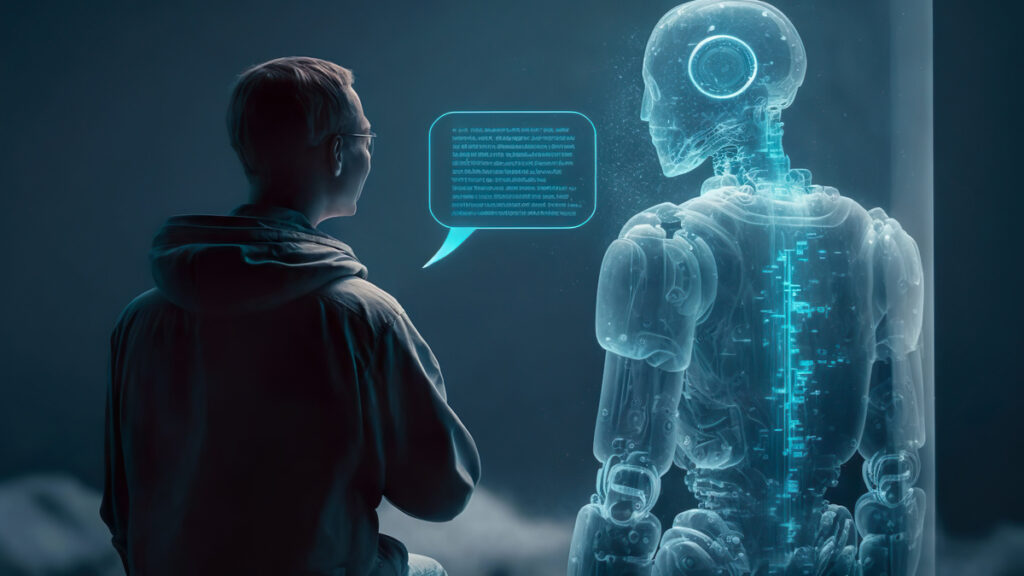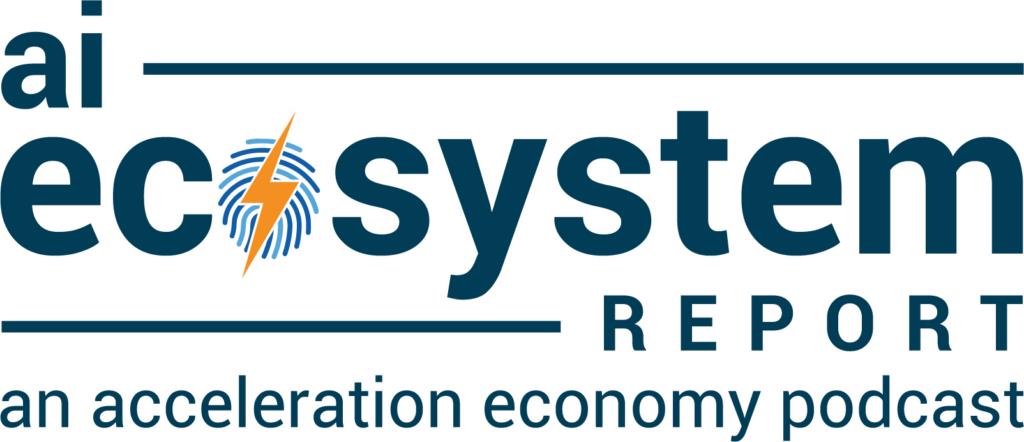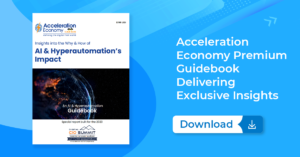For decades, businesses have focused heavily on developing methods to automate repetitive tasks. Business processes have been automated to increase efficiency, decrease human error, and standardize output.
However, automation is still far from perfect and cannot replace humans completely, especially when it comes to creative thinking. This is where I believe that introducing generative artificial intelligence (AI) can help in making automation smarter. In this analysis, we’ll see how this cutting-edge technology can be applied to the world of automation.
To hear practitioner and platform insights on how solutions such as ChatGPT will impact the future of work, customer experience, data strategy, and cybersecurity, make sure to register for your on-demand pass to Acceleration Economy’s Generative AI Digital Summit.
What is Generative AI?
Generative AI has the capacity to learn from massive amounts of data and then create new content or generate new ideas based on that data. The ChatGPT language model developed by OpenAI is one of the most well-known examples of generative AI. It is a deep learning model trained on a massive quantity of text data from the internet, which enables it to comprehend the patterns and structures of language to generate coherent responses reminiscent of human thought.
A wide range of fields, such as graphic design, can benefit from generative AI. By analyzing previously created images and understanding patterns of borders and graphics, generative AI can be used to develop brand-new images, logos, and other designs.
Automation and Generative AI as the Game Changer
According to Accenture’s Technology Vision 2023 report, the introduction of automation technologies has the potential to increase productivity by 45%, with a subsequent $16.3 billion in economic impact by 2028. In my opinion, these statistics aren’t very surprising, as I can see the benefits of automation in my workplace every day. Additionally, if we include generative AI with automation, the forecasts above may jump dramatically, resulting in the combination of generative AI and automation becoming the game changer for every industry.
Whenever we discuss automated processes or bots, what we are actually referring to is a script that executes in accordance with the rules that were programmed into it. Any possible scenario that does not fit within those parameters is flagged and then is generally referred to humans to rectify.
The error rate can vary depending on the complexity of the automated process. To minimize the error rate and make smarter automations, I believe that generative AI and robotic process automation (RPA) can work together to create data that can be used to train the bots. This can improve the efficiency of the bots, allowing them to perform tasks more quickly and accurately.
In addition to this, the decision-making capabilities of algorithms that are used in RPA will be improved with the application of generative AI. For instance, generative AI can be used to develop predictive models, which can then assist bots in making more educated decisions based on the patterns and trends found in data. We can’t expect this to happen very soon, as generative AI and its applications are still very new.

Which companies are the most important vendors in AI and hyperautomation? Check out the Acceleration Economy AI/Hyperautomation Top 10 Shortlist.
The Benefits of Generative AI and Automation
Combining generative AI with RPA has a number of benefits, one of which is that it enables businesses to react more rapidly to shifting customer requirements and market conditions. Businesses have the ability to become more flexible and responsive, as well as quickly adjust to new opportunities or challenges — if they automate their processes.
There are a few ways that combining generative AI and automation can enhance the overall user experience:
- Chatbots: It is possible for businesses to use generative AI to develop new capabilities for chatbots based on the interactions they have with customers. This would make the chatbots more effective and personalized over time, improving the customer experience. The chatbots can then be automated, making it possible for them to respond to inquiries from customers without the need for human involvement.
- Empowering Citizen Developers: Citizen developers can get a head start on their application creation with the help of generative AI, which enables them to generate code more rapidly and explore a variety of options. It is also able to propose suggestions for optimizing and improving code that already exists, streamlining the development process.
- Designing: Using customer preferences and feedback, a business could use generative AI to come up with new product designs to sell. The designs can then be mechanized and incorporated into the manufacturing process, which will ultimately result in a production process that is more effective and tailored to the individual.
- Image and Video Processing: The use of generative AI allows for the automatic processing and analysis of visual data, such as still images and moving videos, as well as the generation of new material based on that data. This can be helpful in industries, such as advertising and entertainment, where the creation of visually engaging content is essential, especially when it comes to content that is displayed on screens.
- Marketing: The use of generative AI allows for the creation of personalized marketing strategies for individual clients that are based on the preferences and actions of those clients in the past. The marketing process can then be mechanized and the campaigns can be incorporated into it, which will result in marketing that is well-targeted.
These are just a few examples of how automation and generative AI can work together to develop new and innovative solutions in a variety of industries. There are countless other possibilities. As the development of generative AI continues, we can look forward to seeing a greater variety of fascinating uses for a variety of technologies.
Final Thoughts
The combination of technologies that enable generative AI and automation has the potential to transform many different industries by increasing productivity, enhancing quality, and personalizing user experiences. Automation alone did not make it feasible to provide customers with personalized experiences in the past. However, I am confident that, when combined with generative AI, automation will enable industries to provide customers with a wide range of personalized experiences.
Businesses have the potential to achieve substantial gains in both their productivity and their revenue by combining the benefits of both technologies. Nevertheless, the challenges of data quality and successful collaboration between human and automated workers need to be carefully considered. Generative AI and automation definitely have a bright future ahead of them. It’s possible that the businesses that embrace these technologies are going to be the most successful in the years to come.
Looking for real-world insights into artificial intelligence and hyperautomation? Subscribe to the AI and Hyperautomation channel:









